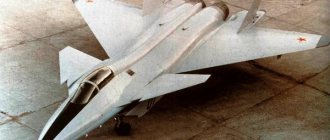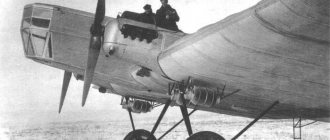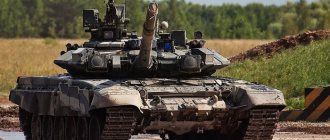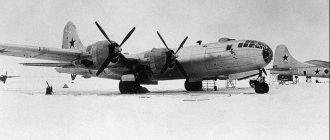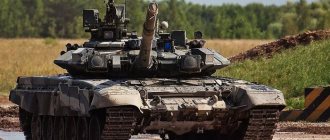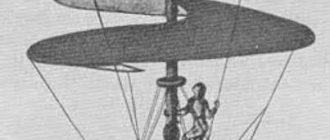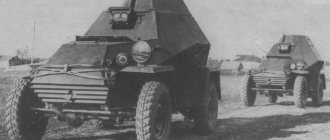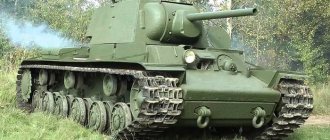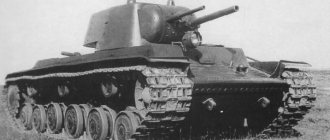SAM S-25 Berkut. Range and altitude of damage. Rockets
S-25 "Berkut". In the late 1940s and early 1950s, the Soviet Union began one of the most complex and expensive programs of the early Cold War, second only to its nuclear weapons program. In the face of a threat from the strategic bomber forces of the United States and Great Britain, J.V. Stalin ordered the creation of an air defense missile system controlled by a radar network to repel possible massive air attacks on Moscow. The Moscow system was followed in 1955 by a second program aimed at protecting Leningrad.
Atomic threat
The post-war period of the 1950s, when it seemed that the USSR could “exhale” a little, paradoxically seemed no less dangerous for the country than the Second World War.
The emergence of atomic weapons in the United States and the transition of aviation to jet engines called into question the defense capability of the state. The anti-aircraft artillery of that time was unable to hit the enemy aircraft that had incredibly accelerated and increased in altitude. And the fact that America had plans to bomb the USSR is no longer a secret.
It is not surprising that Stalin became seriously concerned about this problem. He invited Soviet scientist Pavel Kuksenko to discuss it. This is how one of the creators of the S-25, Lieutenant General Engineer Grigory Kisunko, described that meeting in his book “The Secret Zone.” Confession of the General Designer: “Hello, Comrade Kuksenko,” and with a movement of his hand holding the pipe (Stalin) he pointed to the chair that stood next to the sofa. Then, putting the papers aside, he said: “Do you know when an enemy plane last flew over Moscow?... On the tenth of July, one thousand nine hundred and forty-two.” It was a single reconnaissance aircraft. Now imagine that a single plane will also appear over Moscow, but with an atomic bomb. What if several single planes break through from a massive raid, as happened on July 22, 1941, but now with atomic bombs?
After a pause in which he seemed to be pondering the answer to this question, Stalin continued:
— But even without atomic bombs, what remains of Dresden after the massive air strikes of our yesterday’s allies? And now they have more planes, and enough atomic bombs, and they nest literally right next to us. And it turns out that we need a completely new air defense system, capable of not allowing even a single aircraft to reach the defended object even during a massive raid. What can you say about this extremely important issue?”
Pavel Kuksenko assured the leader that he and designer Sergo Beria (son of Lavrenty Beria) had studied the captured German designs “Wasserfall”, “Reintocher”, “Schmetterling” and they had some ideas in this regard. Air defense systems should be based on a combination of radar and surface-to-air and air-to-air guided missiles.
SAM S-25 Berkut - video
After the end of World War II, the Soviet Union began a program of using captured German military technology. Particular interest was shown in radar technology and anti-aircraft missiles. After a preliminary study of many types of German missiles, it was decided to focus on the Schmetterling and Wasserfall missiles. On their basis, NII-88 specialists developed the R-101 and R-105 missiles. which began testing in 1948. However, both types of missiles showed insufficient combat effectiveness, and the Soviet program suffered from the same problems as Germany: excessive concentration on missile design and insufficient attention to more critical technological problems associated with the radar system and the system. control (guidance). At the same time, other Soviet design bureaus, reinforced by German engineers, were researching key technologies. In particular, at NII-885 (Monino, Moscow Region), a semi-active radar seeker for anti-aircraft missiles was developed, which used the SCR-584 radar, obtained under Lend-Lease, to illuminate the target.
In August 1950, the task of developing the Moscow air defense system. based on anti-aircraft missiles, was assigned to the Moscow SB-1. The main designers of the system were S. Beria (son of J1. Beria), a well-known radio specialist in the country, and P. Kuksenko, previously repressed. The system was named “Berkut” (based on the initial letters of the developers’ last names).
The S-25 Berkut strategic air defense system (SA-1 “Guild” according to the US/NATO classification) was intended to defend Moscow from air raids in which up to 1000 bombers could participate. In accordance with the tactical and technical requirements, it was necessary to develop a Control Center that would ensure the targeting of missiles at 20 bombers flying at speeds of up to 1200 km/h at ranges of up to 35 km and at altitudes from 3 to 25 km. Work on the Berkut system was distributed among several special design bureaus. OKB-301, headed by S. Lavochkin, was entrusted with the development of the associated B-300 rocket (). It made extensive use of German technology, but was different from the previous R-101 system.
The B-300 rocket was single-stage, made according to the “canard” aerodynamic configuration: the air rudders were located in the nose of the hull in two mutually perpendicular planes in front of the two wings, installed in the same planes on the middle part of the hull. The cylindrical body with a diameter of 650 mm was divided into 7 compartments. The tail was equipped with a four-chamber liquid propellant rocket engine Ш9-29 with a displacement feed system, which developed a thrust of 9000 kg. Gas rudders were attached to a special truss in the rear part of the hull. The launch mass of the rocket is 3500 kg. The missile launch was carried out vertically from a special launch pad. The B-200 radar provided tracking of both the target and the missile, and issued control commands to the missile. The B-200 radar antenna systems scanned space in the azimuthal and elevation planes. The radar measured three coordinates necessary to generate missile control commands. The missile was equipped with a proximity fuse, which was triggered at the final interception phase; the system did not have the ability to detonate on command. The E-600 high-explosive fragmentation warhead was supposed to hit enemy aircraft from a distance of up to 75m.
Test launches of the B-300 missiles began in June 1951, i.e., less than a year after the start of the program. During the year, about 50 of these missiles were launched at the Kapustin Yar missile test site. The initial launches were mainly related to aerodynamic and component tests, since the B-200 radar was not delivered to the Kapustin Yar test site until the end of 1952. Testing of the full system began in May 1953, when a Tu-4 bomber was shot down by a B missile -300 at an altitude of 7 km. The choice of target type was not accidental; the Tu-4 aircraft was a copy of the American B-29, which dropped atomic bombs on Hiroshima and Nagasaki. Refinement production missiles were tested in 1954, including the simultaneous interception of 20 targets. After the death of I.V. Stalin, significant changes occurred in the leadership of the Berkut program. SB-1 was removed from the subordination of the KGB, Beria was arrested, S. Beria was removed from work, and SB-1 was renamed KB-1 of the Ministry of Agricultural Engineering. The chief designer of NI I-108, A. Raspletin, was transferred to KB-1 and headed the Berkut program, which was renamed the S-25 program.
Under the name S-25 "Berkut" the system was put into service and its serial production and deployment began. The most expensive element of the system was the launch sites and the necessary road network. It was decided to create two rings of missile regiments around Moscow: one ring at a distance of 85-90 km from the city center to deliver a decisive blow against bombers, and the other at a distance of 45-50 km to destroy bombers that broke through the first ring. In order to provide access to the launch sites, two ring roads were built. According to American intelligence estimates, the construction of these roads and launch positions in 1953-1955. The annual production of concrete has been used up.
Construction began in the summer of 1953 and ended in 1958. 22 anti-aircraft regiments were deployed on the inner ring, and 34 on the outer ring, i.e. 56 regiments in total. Each launch position consisted of four functional sections-zones: launch, radar, administrative, housing and technical and power transformer substation. The launch zone, with an area of more than 140 hectares, had a developed network of access roads and 60 launchers. At a distance of approximately 1.5 km, a command post was located in a bunker, occupying an area of approximately 20 hectares. On the territory of the point there was a B-200 radar, including an azimuth radar and an altimeter. The main BESM and 20 control posts were deployed in the bunker. Each regiment consisted of about 30 officers and 450 privates. Each facility contained three missiles with a nuclear warhead having a TNT equivalent of about 20 kt. Such a missile could destroy all targets located within a radius of 1 km from the detonation point and should have been used in the event of massive raids using nuclear weapons carriers.
The position configuration allowed the regiment to hit 20 targets simultaneously. Apparently, at the first stage, each regiment could fire at 20 targets with 20 B-300 missiles. After improving the system, shelling could be carried out by three missiles at one target, which significantly increased the probability of destruction. In addition to the launch positions of the 56 regiments, six defense zones were built along the inner ring road. The S-25 system's positions were supported by a large number of country air defense radars, which provided early warning and initial information on targets. Especially for these purposes, NII-224 developed the A-100 surveillance radar. but other early warning radars could also be used. The deployment of the S-25 system coincided with a significant increase in the air defense radar network, particularly in the period 1950-1955. production of radar equipment quadrupled.
Two rings of the S-25 "Berkut" air defense system around Moscow with a radius of 50 and 90 km
Serial production of the S-25 Berkut system began in 1954. By 1959, only approximately 32 thousand B-300 missiles were produced. This was 20 times the scale of ballistic missile construction during the same period. For the first time, the B-300 missile defense system was openly shown at a parade on November 7, 1960. The S-25 system was roughly comparable in scale and construction time to the American Nike-Ajax system. In the USA, 16 thousand missiles were produced and 40 divisions were deployed, in the USSR - 32 thousand and 56 regiments were deployed. The first division of the Nike-Ajax system was deployed near Washington in December 1953, somewhat earlier than in the Moscow Air Defense District. The large scale of production and deployment of the S-25 system in the USSR is partly explained by a simpler guidance system, allowing three missiles to intercept one target to achieve an acceptable level of destruction. The technical parameters of both systems were approximately the same, the actual destruction range was 40-45 km. However, the B-300 missile was three times heavier than the American missile, partly due to the larger warhead mass, but mainly due to the use of a less efficient single-stage design, as opposed to the two-stage Nike-Ajax missile. In both cases, these systems were quickly replaced by more complex ones: Nike-Hercules in the USA and S-75 Dvina in the USSR.
Like many early missile weapon systems, the S-25 system, which N.S. Khrushchev called it the “Moscow stockade” and had obvious shortcomings even at the deployment stage. The system's assets were evenly distributed along the periphery of Moscow without strengthening the most likely directions of attack (Northern and Western). Insufficient fire density could not prevent a breakthrough by superior forces, or the defense could be broken through even before the main forces of bomber aircraft arrived. Although the system was never used in combat, there is no reason to believe that the S-25 was well protected from electronic warfare. While US and British aviation gained significant combat experience in the use of electronic warfare during the Second World War and in Korea, in the USSR they were in their infancy. This made the S-25 system weakly protected from electronic jamming and other electronic warfare methods. The choice of a fixed configuration of combat positions limited the development of the system and its improvement. Huge command bunkers, adapted to accommodate the B-200 RAS antenna system, limited the azimuthal capabilities of the station.
The S-25 system could hit subsonic targets flying at speeds up to 1000 km/h, although at. bombers with supersonic speed appeared in weapons. And finally, in the mid-50s, the USA and USSR developed missiles launched outside the air defense zone: the American AGM-28F “Hound Dog” and the Soviet X-20 (AS-3 “Kangaroo”). They posed a threat because they had a significantly smaller radar reflective surface and could be launched outside the affected area of the S-25 system. The disadvantages and high cost of the S-25 system led to the refusal to deploy it around Leningrad. The S-25 system remained in service for almost 30 years, although its effectiveness continued to decline. In the 80s it was replaced by the S-300P system.
Tactical and technical characteristics of the S-25 Berkut air defense system
— Years of operation: 1955 - 1982 - Entered into service: 1955 - Designer: Lead developer - KB-1
Characteristics of the 1955 model system
— Target speed: 1500 km/h — Hit altitude: 5.0—15 km — Range: 35 km — Number of targets hit: 20 — Number of missiles: 60 — Possibility of hitting a target in interference: no — Missile storage life: on the launcher — 0.5 years; in stock - 2.5 years
Characteristics after modernization in 1966
— Target speed: 4200 km/h — Hit altitude: 1500–30000 m — Range: 43 km — Number of targets hit: 20 — Number of missiles: 60 — Possibility of hitting a target in interference: yes — Missile storage life: on the launcher — 5 years; in stock - 15 years
Photo of S-25 Berkut air defense system
The vertical antenna of the B-200 station of the S-25 "Berkut" complex is designed to view the airspace in the elevation plane.
Control room of the S-25 complex. In the center is the senior operator's console, on the sides are the workstations of guidance and launch operators, and in the background are air situation tablets.
Target based on the 5YA24 rocket
Similar
ZSU-23-4 Shilka. Rate of fire. Armament. Dimensions. Weight
S-75 air defense systems Dvina, Desna, Volkhov. Compound. Rockets. Damage range
ZRPK Pantsir-S1. Armament. Price. Detection range
S-350E Vityaz air defense system. Compound. Rockets. Damage range
OSA-AKM air defense missile system. Firing range. Rockets. Compound. Dimensions. Weight
ZSU 2S6M Tunguska-M. Damage range. Rockets. Compound. Dimensions
ZRK 2K12 KUB. Damage range. Rocket speed. Principle of operation
SAM Buk-M1-2. Detection and destruction range. Rockets. Possibilities
SAM S-200 Angara, Vega, Dubna. Damage range. Compound. Principle of operation
MANPADS 9K310 Igla-1. Damage range. Weight. Possibilities
SAM 9K331 Tor-M1. Damage range. Rocket. Principle of operation
MANPADS Verba. Damage range. Rocket. Composition of the complex
SAM S-125 Neva (Pechora) Range and height of destruction. Rockets
S-400 Triumph air defense system. Damage range. Rockets. How does it work
SAM 9K35 Strela-10. Damage range. Modifications. Rockets
SAM S-300PMU2 Favorite. Damage range. Compound. Rockets
SAM S-25 Berkut. Range and altitude of damage. Rockets
SAM Sosna. Armament. Damage range. Rockets. Compound
American Patriot air defense system. Damage range. Compound. Rockets
Naval air defense missile system Dagger. Damage range. Compound. Rockets. On what ships is it installed?
ZRK 2K11 Circle. Damage range. Modifications. Compound
Anti-aircraft gun ZSU-57-2. Armament. Dimensions. Booking
KTPU "Gibka" (3M-47) Damage range. Rockets. Principle of operation
"Osa-M" - shipborne anti-aircraft missile system
MANPADS 9K34 "Strela-3"
FIM-92A Stinger - American MANPADS
S-300V (9K81) - anti-aircraft missile system
9S482M7 (PU-12M7) - battery-operated mobile control station
SAM "Avenger" - American mobile anti-aircraft missile system
MANPADS 9K32 "Strela-2"
SAM M-1 "Volna" (4K90) - ship-based anti-aircraft missile system
MD-PS - anti-aircraft missile system
ZSU-37 - self-propelled anti-aircraft gun
Operators[edit]
Map with S-25 operators in blue and former operators in red
Current operators[edit]
- Russia - Now these missiles are used as targets for training anti-aircraft missile systems. [4] [5] The Strizh target missile (S-25M complex) is in service as of 2011. More than 11,000 missiles were fired. [6]
- North Korea - 72 delivered in 1961. [7] [8]
Former operators[edit]
- Soviet Union - retired in 1982.

